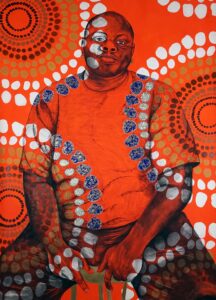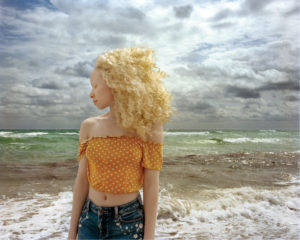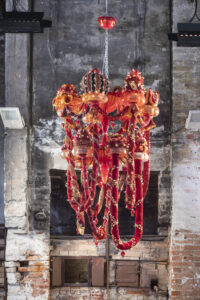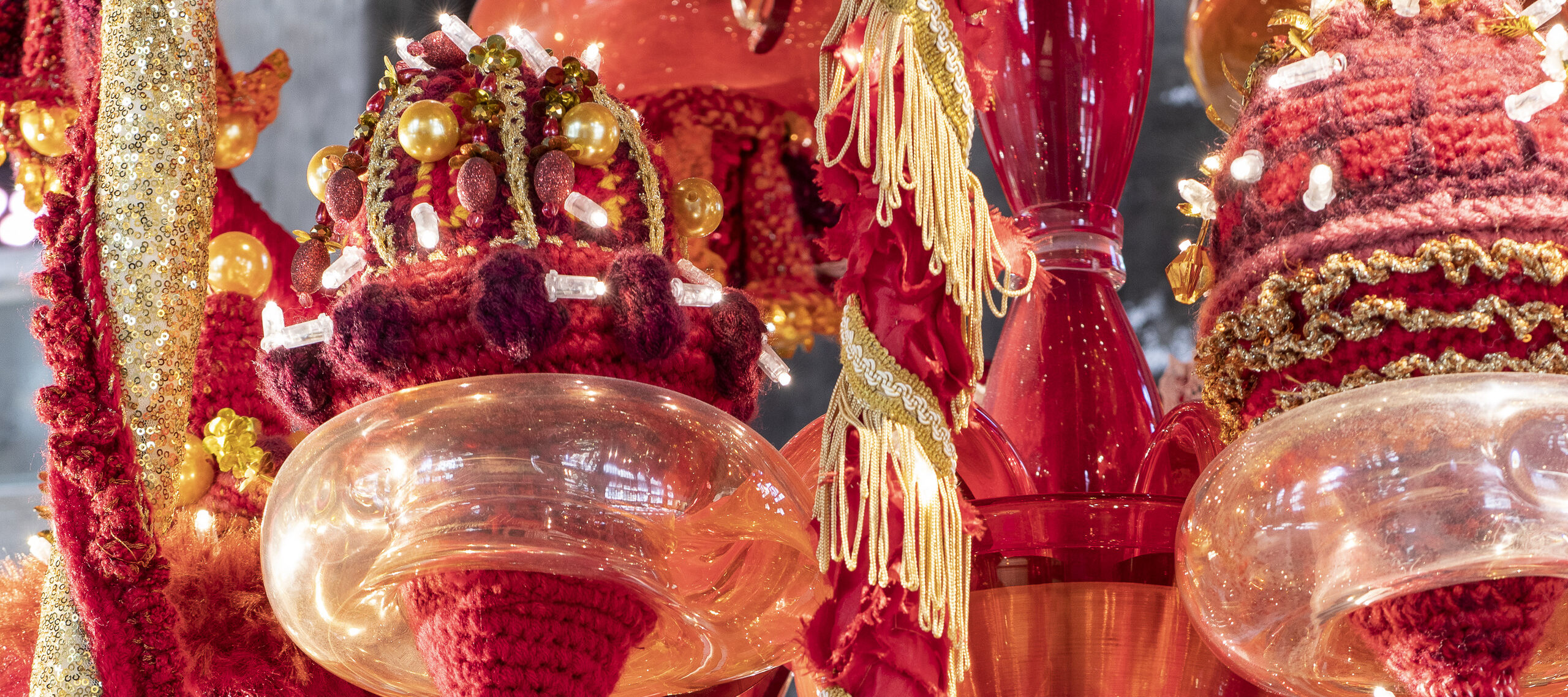WASHINGTON—The National Museum of Women in the Arts (NMWA) announces recent major collection acquisitions that reflect a commitment to telling the fullest possible story of women in art. The newly acquired works include 166 photographs by the renowned American documentary photographer Mary Ellen Mark, a large-scale portrait by artist Delita Martin, three photographs by artist Rania Matar and a sculpture by Portuguese artist Joana Vasconcelos.
“We are so grateful to the generous donors who made these acquisitions possible,” said NMWA Director Susan Fisher Sterling. “We are always immensely thankful for patrons who embrace our mission and step up to help us build our collection in ways that reflect a broad spectrum of innovative approaches to contemporary art.”
About the Acquisitions
Mary Ellen Mark (1940–2015)

Known for her compassionate and candid depictions of subjects living outside of mainstream society, Mark’s images span her earliest work in Turkey in the 1960s to photographs made on Polaroid film in the early 2000s. Works from Mark’s best-known series, including “Prom,” “Streetwise” and “Twins,” offer an intriguing glimpse into the artist’s wondrous and uncanny vision.
NMWA has previously exhibited Mark’s work, and an upcoming exhibition, Girlhood, will be on view from January 16 to April 18, 2021. While Mark built a reputation as a photojournalist, contributing photo essays and portraits to publications such as Life, The New Yorker, Rolling Stone, Vanity Fair and The New York Times Magazine, her work has also been widely exhibited in galleries and museums around the globe. She published more than 20 books of her photographs and received numerous awards and grants for both photography and journalism.
This donation of more than 160 Mary Ellen Mark photographs is from the Photography Buyers Syndicate, a limited-membership group that purchases large photography collections and frequently donates them to public collections. The gift includes images spanning Marks’s entire career.
Delita Martin (b. 1972)

Through her work, Delita Martin aims to create a new iconography for African Americans based on African tradition, personal recollections and physical materials. Combining up to seven processes, Martin creates large-scale prints onto which she draws, sews, collages and paints. She claims space for her subjects, creating a powerful presence that highlights the historical absence of Black bodies in Western art. A recurring theme throughout Martin’s work is the connection between past and present generations, which she locates in a transitional space between the physical and spiritual worlds. She conveys these connections through symbols such as circles, birds and masks of West Africa. Her use of color and shape is symbolic: blue holds association with spirituality, the use of gold leaf is reminiscent of early Christian religious icons. Circles, which appear as patterning elements as well as hoop earrings, are symbolic in Martin’s work of the female, the moon and infinity, as well as totality, wholeness, timelessness and all cyclic movement. The museum acquired Believing In Kings (2018), which was featured in a recent solo exhibition.
Rania Matar (b. 1964)

Informed by her Lebanese, Palestinian and American backgrounds and experience, documentary photographer Rania Matar’s practice is dedicated to exploring issues of female adolescence and womanhood, both in the United States and the Middle East. Her “SHE” series (2016–ongoing) depicts women in their early twenties, a time when most will leave their family homes to begin independent lives. To convey the young women’s strength but also the perils they face, Matar photographs them in lush and unforgiving landscapes. She portrays their individual beauty through their relationships with their environments—tucked among the scaly roots of a banyan tree or backed by crashing ocean waves and roiling storm clouds.
Matar’s photographs have been widely published and exhibited and are in permanent collections worldwide. A 2018 Guggenheim fellow, Matar’s work was featured in a recent NMWA exhibition, Live Dangerously, as well as in She Who Tells a Story: Women Photographers from Iran and the Arab World. The museum acquired three large-scale photographs from the artist’s series “SHE.”
Joana Vasconcelos (b. 1971)

Internationally renowned Portuguese artist Joana Vasconcelos creates exuberant mixed-media works that foreground and elevate the collective identity of women in art and society. Emblematic of her bold, feminist sculpture is Rubra (2016), a nearly six-foot-tall Murano glass and crocheted wool chandelier, the second work by Vasconcelos to join the museum’s collection.
Unabashedly flamboyant, Rubra (Latin for “red”) hangs above viewers in a spectacular display of fiery crimson hues and glowing light. The chandelier features a mélange of handmade wool crochet, lace, sequined fabric, gold tassels, delicate beaded ornaments and Murano glass. Elongated garlands of sewn fabric dangle at various heights, topped by embroidered crowns. Myriad LED light bulbs studded throughout the piece create dazzling effects. Vasconcelos reinvigorates a traditional craft, merging the 1,500-year-old art of Murano glassmaking with contemporary design. The highly decorative and sensual aesthetic of the work alludes to the Portuguese baroque style of art and architecture from the 17th century, which used rich color, ornate details, expression and grandeur to create a sense of awe and wonder.
National Museum of Women in the Arts
The National Museum of Women in the Arts (NMWA) is the only major museum in the world solely dedicated to championing women through the arts. With its collections, exhibitions, programs and online content, the museum inspires dynamic exchanges about art and ideas. NMWA advocates for better representation of women artists and serves as a vital center for thought leadership, community engagement and social change. NMWA addresses the gender imbalance in the presentation of art by bringing to light important women artists of the past while promoting great women artists working today. The collections highlight painting, sculpture, photography and video by artists including Louise Bourgeois, Mary Cassatt, Judy Chicago, Frida Kahlo, Shirin Neshat, Faith Ringgold, Pipilotti Rist, Amy Sherald and Élisabeth Louise Vigée-LeBrun.
During the current closure, the museum welcomes members of the public to explore its social media accounts and online resources. NMWA is located at 1250 New York Avenue, NW, Washington, D.C. For information, call 202-783-5000, visit nmwa.org, Broad Strokes blog, Facebook, Twitter or Instagram.
